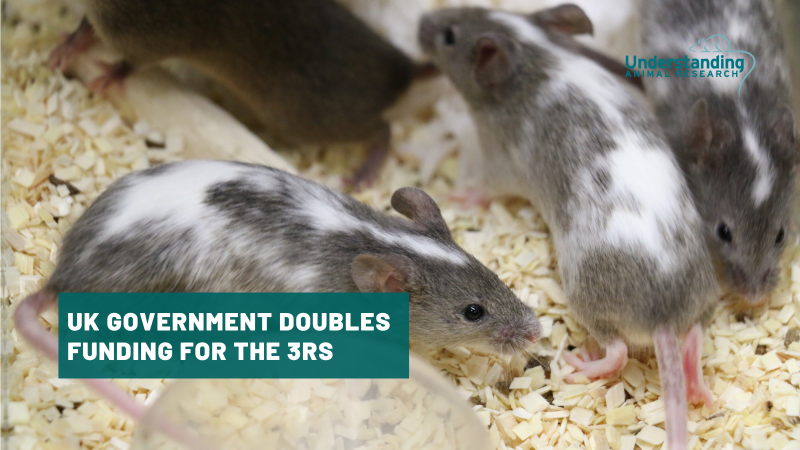Text to go here...
1. Mice are used in 74.7% of procedures in animal research
Numbers relate to procedures on animals in Great Britain in 2013:
- Rats, mice and other rodents, all purpose-bred laboratory species 84.5%
- Fish, amphibians, reptiles and birds 16.3%
- Sheep, cows, pigs and other large mammals 1.5%
- Dogs and cats, all bred for research, no strays or unwanted pets can be used 0.12%
- Primates, mainly marmoset and macaque monkeys 0.07%
Chimpanzees, orang-utans and gorillas have not been used in the UK for over 20 years and their use is now banned.
https://www.understandinganimalresearch.org.uk/animals/types-animals/
2. 98% of human genes have a comparable gene in mice
The mouse makes an excellent model for human disease because the organization of their DNA and their gene expression is similar to humans, with ninety-eight percent of human genes having a comparable gene in the mouse. They have similar reproductive and nervous systems to humans, and suffer from many of the same diseases such as cancer, diabetes and even anxiety. Manipulating their genes can lead them to develop other diseases that do not naturally affect them, and as a result research on mice has helped the understanding of both human physiology and the causes of disease.
http://www.animalresearch.info/en/designing-research/research-animals/mouse/
Inbred strains of mice were used as disease models, long before the mouse genome project and transgenics. There are a large number of laboratory strains available, and their long breeding history means that mice of a single laboratory strain are isogenic. This is useful in experiments, as it reduces natural variation between subjects. Some inbred strains are used for their predisposition to certain mutations or genetic diseases, while others are used for their general health and resistance to mutations.
http://www.animalresearch.info/en/designing-research/research-animals/mouse/
4. It has been possible to clone mice since 1998
http://www.animalresearch.info/en/designing-research/research-animals/mouse/
5. Studies with mice were awarded 30 Nobel Prizes
http://www.animalresearch.info/en/medical-advances/nobel-prizes/
6. Mice helped with the discovery of HIV and its treatment
Bone marrow-Liver-Thymus (BLT) mice have become an important part of research into new treatments and vaccines. With bone marrow, liver and thymus tissue transplanted from humans, the mice can be regarded as having a human immune system. This allows them to become infected by HIV when introduced vaginally and exhibit many of the hallmarks of the disease in humans.
http://www.animalresearch.info/en/medical-advances/diseases-research/aids-hiv/
Mice are used in a vast range of experiments, many of which are classified as fundamental research, investigating the physiology of mammals.
http://www.animalresearch.info/en/designing-research/research-animals/mouse/
http://www.animalresearch.info/en/designing-research/research-animals/mouse-gm/
http://www.animalresearch.info/en/designing-research/research-animals/mouse-immunodeficient/
http://www.animalresearch.info/en/designing-research/research-animals/mouse/
This is one reason why poison is so effective at dispatching these creatures. They can’t rid it from their body because they don’t sweat or vomit!
10. Mice can jump a foot in the air, are great climbers and swimmers
Mice are talented gymnasts. You may have seen a mouse jump a foot into the air. But jumping is not all they can do. They are also great climbers and swimmers. But the most fascinating thing about them is that they can squeeze through openings as small as the size of a dime.
http://509stateofmind.com/5-rodent-facts-you-probably-didnt-know/




